
There was a note of triumph in the air. With employees cheering, Chrysler Corp. Chairman Lee Iacocca drives the first Chrysler “K-Car” off the company’s Jefferson Avenue assembly line in Detroit.
Internally known as the “K-Car”, the front-wheel-drive Dodge Aries and Plymouth Reliant represent a new lease on life for the ailing Chrysler Corp., which had almost vanished, a victim of a long, slow 30-year decline marked by bouts of success and serious economic crises.
Corporate rot sets in
Like other American automakers in the 1960s, Chrysler began to lose its way when management by numbers became the operating norm. The automaker once known for its engineering acumen was now being led by cold-hearted moneymen who had little-to-no feel for what makes a good car that people would want to buy.
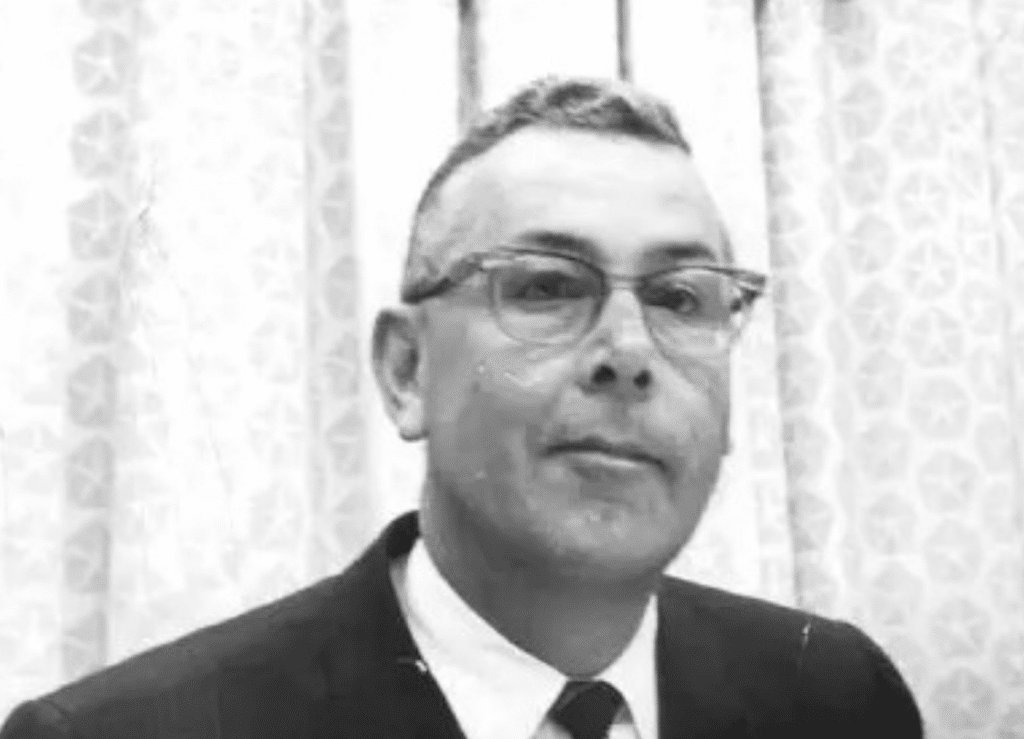
But they knew how to work with money. So instead of investing in product development, in 1967, the automaker, then led by CEO Lynn Townsend, established the Chrysler Realty Corp. to foster land development deals. Townsend also established a sales bank, a bookkeeping gimmick that led the company to build cars for which there were no orders to create the perception of high-volume sales in an effort to please Wall Street.
Cars would often sit in open lots in Detroit’s notoriously lovely winter weather until zone managers could twist the arm of one their dealers to take some cars, usually at a huge discount. During one downturn in early 1969, Chrysler’s sales bank held 408,302 unordered cars, a 102-day supply at that time. But the sales bank had a nefarious side effect: it insulated management from customers’ preferences.
Lacking capable, knowledgeable, and visionary leadership, company mistakes in engineering and styling multiplied as the cars piled up in the sales bank. As a result, profits withered as 1974’s $41.4 million loss swelled to 1975’s $259.5 million loss. Townsend retired, naming his president, John Riccardo, as the company’s new CEO.
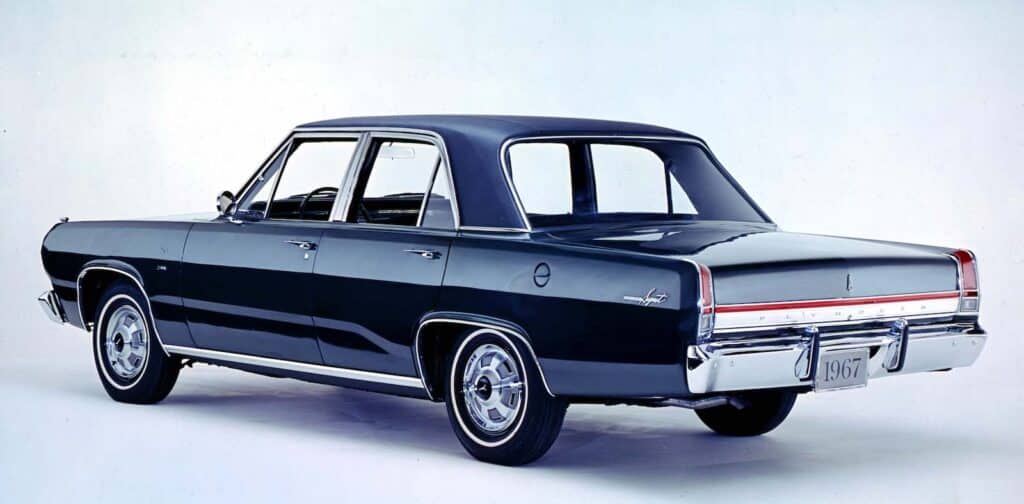
But the company lacked enough engineered and designers to create new cars, a result of Townsend’s cost cutting in the wake of company losses. But at least the company was making profits from real estate.
The cars that almost killed Chrysler
Among Chrysler’s most popular products were the well-regarded Dodge Dart and Plymouth Valiant. These solid if unremarkable compacts were known for their longevity and reliability, not their sex appeal. For 1976, they were replaced by the Dodge Aspen and Plymouth Volaré, cars that seemed perfectly timed in an era OPEC oil embargoes and skyrocketing fuel costs. They were highly praised, with the Plymouth Volaré winning the 1976 Motor Trend Car of the Year.
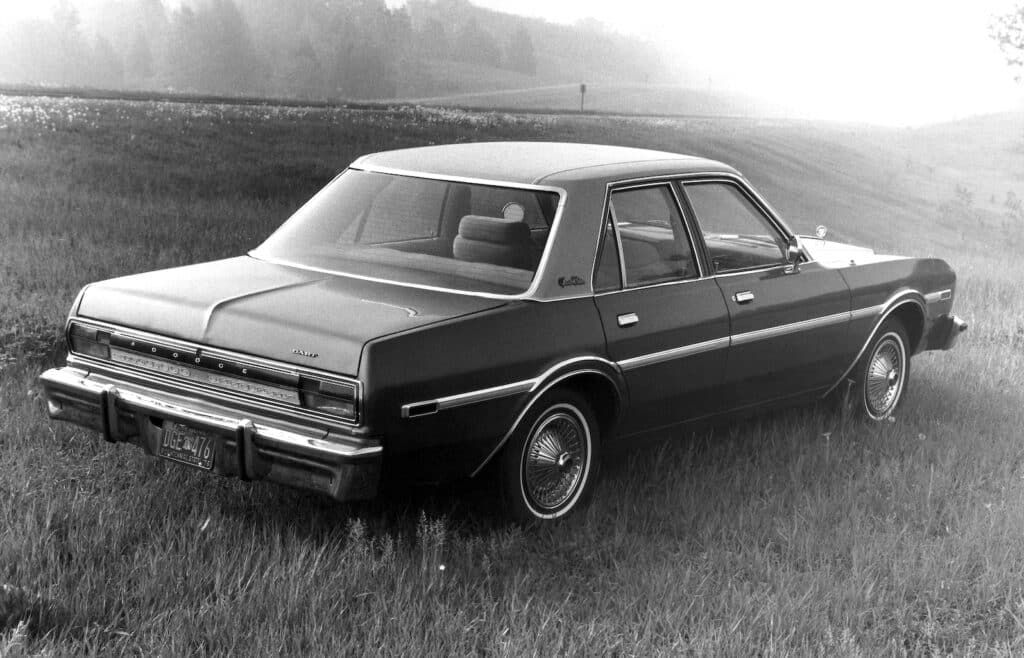
Offered as a coupe, sedan and station wagon, the pair proved popular. Chrysler sold more than 500,000 in 1976 as Dodge sales rose 14% and Plymouth sales jumped 22%. In 1977, demand rose to nearly 700,000 for the year. Chrysler had a hit on their hands.
But as a result of the severe cutbacks in engineering staff in 1974 and 1975, many components of the new car line were not adequately tested. Iacocca speculated that the Dodge Aspen and Plymouth Volaré required another six months of development.
As a result, the car would stall when drivers stepped on the throttle, brakes would fail, the hood would unexpectedly open while the car was moving, suspension and braking components deteriorated early, muffler heat shields went missing, and fuel hoses leaked. Then there was the steering wheel shaft that tended to separate from the rest of the steering mechanism resulting in a lack of steering. As if all of that wasn’t enough, they also rusted rapidly.
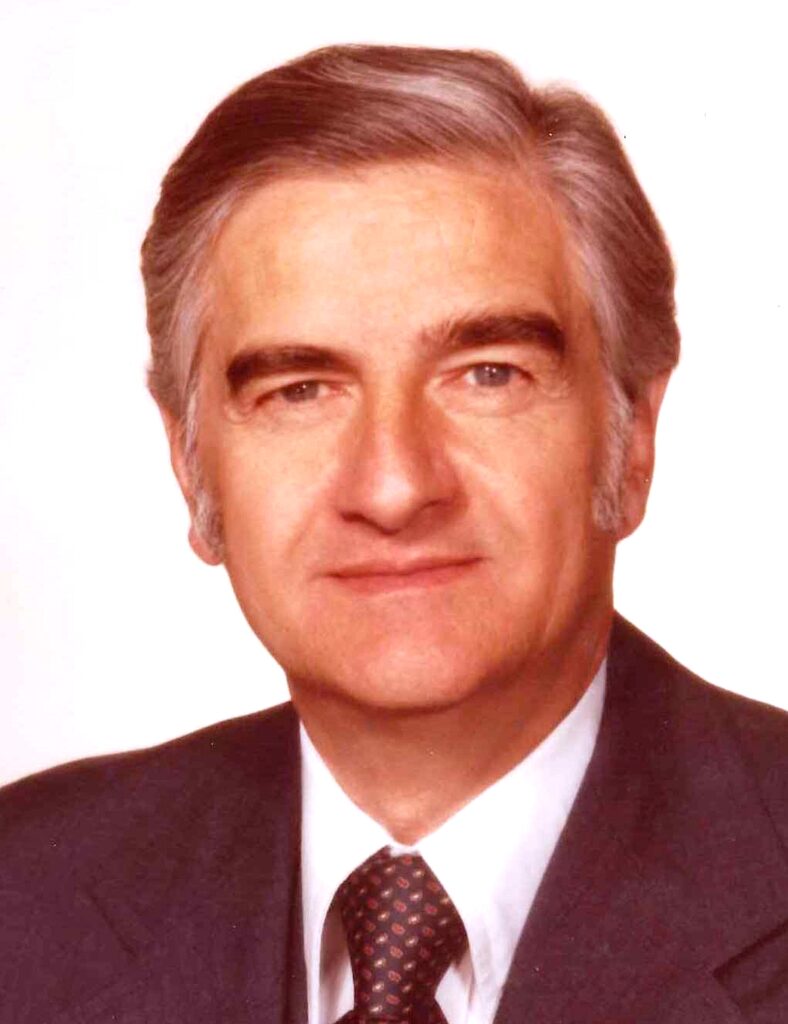
By the dawn of 1978, Chrysler spent more than $200 million (or nearly $1 billion today) recalling and fixing more than 3.5 million the Dodge Aspens and Plymouth Volarés.
“The customers who bought Aspens and Volarés in 1975 were actually acting as Chrysler’s development engineers. When these cars first came out, they were still in the development phase,” Iacocca wrote in his book, Iacocca.
Front-wheel drive to the recue
Despite the atrocious engineering and dreadful build quality of the Dodge Aspen and Plymouth Volaré, Chrysler designers had the right idea: design a smaller car with a large interior. But it wouldn’t be successfully executed until the arrival of Iacocca as the company’s CEO in 1979.
When at Ford in the early 1970s, Iacocca had backed Hal Sperlich, who assisted in the development of the Ford Fiesta for Europe while serving as vice president of Ford product planning and design from 1972 to 1975. It was Ford’s first front-wheel-drive vehicle. Iacocca and Sperlich kept attempting to convince Henry Ford II to build larger front-wheel-drive Fiestas for the American market. But Ford refused.
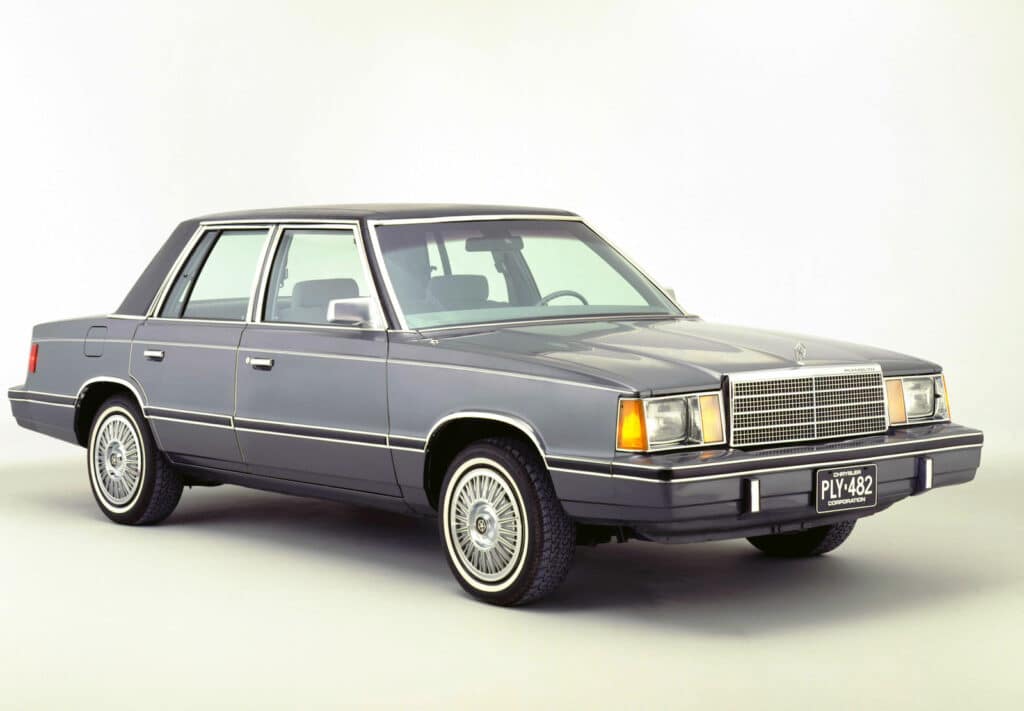
“These were going to be expensive programs, but we saw the future of front-wheel drive in this country,” Sperlich told Automotive News.
Sperlich left Ford to join Chrysler in 1977 as vice president of product planning and design, with Iacocca arriving 18 months later. Along with them came their rejected proposals for front-wheel-drive sedans and minivans.
Iacocca’s rescue of Chrysler is well known. But it wasn’t just Iacocca’s acumen with lawmakers that saved Chrysler’s bacon, it was his product savvy, something Chrysler lacked for a couple decades. He revived Sperlich’s plans for a front-wheel-drive sedan and minivan.
“Chrysler was going down the tube,” Sperlich said. “We had to come up with something that would reignite sales and turn around the decline in penetration.”
But Chrysler’s compact car market share was significant at the time.
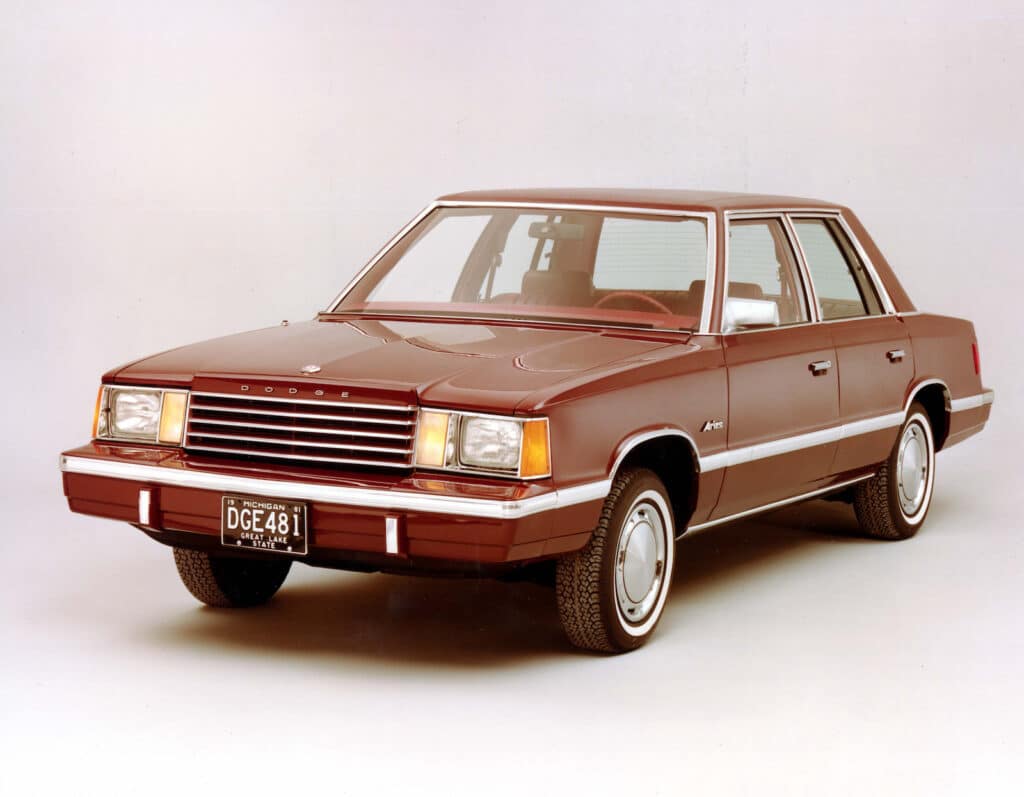
“Chrysler did have a significant position in compact cars with Aspen and Volare, which sold pretty well even though they were horrible cars, and also the front-drive Omni and Horizon subcompacts, with a platform, suspensions and transaxles designed for front drive,” Sperlich told MotorTrend.
“We had two oil crises in the ’70s, and people were going nuts for fuel economy. So we said, “Let’s do new front-drive compacts based on a stretched Omni/Horizon platform, but with good proportions, a good stance and great fuel economy, to turn this company around.”
Special K
It proved to be an easy sell, Sperlich told MotorTrend.
“I walked into [Chrysler Chairman] John Ricardo’s office with the business plan for the K cars and said, ‘Here’s what I think we should do.’ He said, ‘OK, that sounds good.’ I asked, ‘To whom do I present it? Where is the Product Planning committee?’ He said, ‘What are you talking about? I just told you to do it.’ He had just approved it right there! At Ford, it would’ve taken six months.”
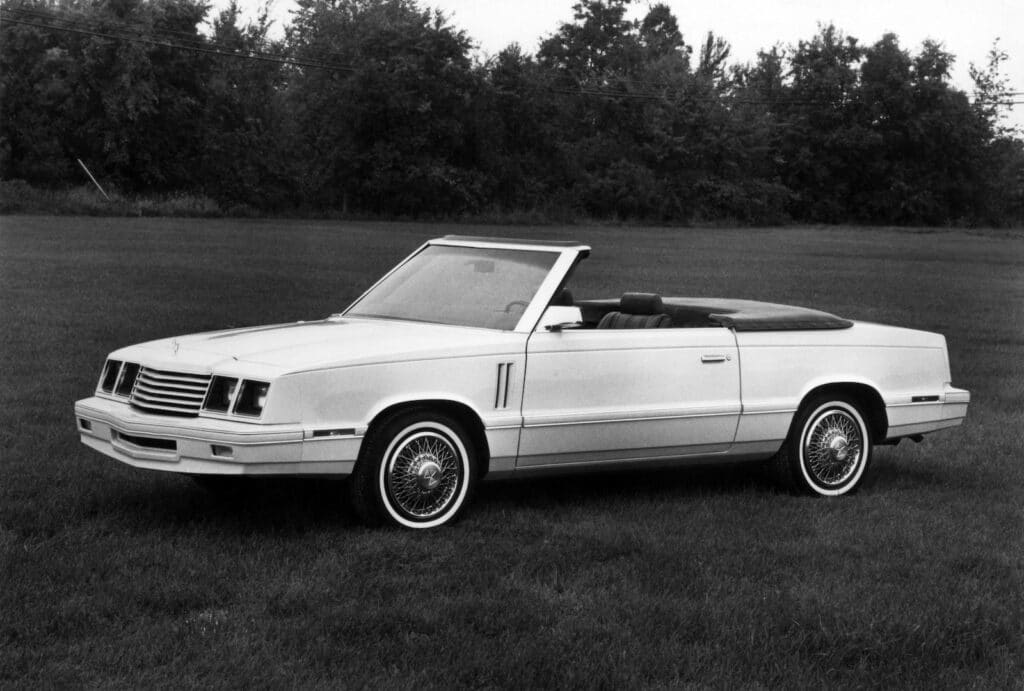
Built on a 100.4-inch wheelbase, the 1981 Dodge Aries and Plymouth Reliant used a transverse 4-cylinder engine that drove the front wheels. With a weight around 2,500 pounds, the pair were powered by Chrysler’s new 2.2-liter inline 4 that generated 84 horsepower, or a Mitsubishi-sourced 2.6-liter 4-cylinder that delivered 92 hp.
The pair proved to be a huge hit, selling 500,000 units in their first year, requiring Chrysler to outfit a second plant to build them in Newark, Delaware at a cost of $50 million. They would go onto underpin the upscale Dodge 400 and 600, Chrysler LeBaron, Chrysler LeBaron GTS, Dodge Lancer, Plymouth Caravelle, Dodge Daytona, Chrysler Laser, as well as Chrysler’s minivans. The platform would be used for virtually Chrysler Corp. cars in the 1980s.
While derided today, the K-Cars and its derivatives save Chrysler from almost certain death, with the company’s market share growing from 9% in 1980 to 14% by 1988.
And that’s very special indeed.
“We were able to invest the cash flow from them in the minivan, which got huge volumes and really got the company going,” Sperlich said.
- SEO Powered Content & PR Distribution. Get Amplified Today.
- PlatoData.Network Vertical Generative Ai. Empower Yourself. Access Here.
- PlatoAiStream. Web3 Intelligence. Knowledge Amplified. Access Here.
- PlatoESG. Automotive / EVs, Carbon, CleanTech, Energy, Environment, Solar, Waste Management. Access Here.
- PlatoHealth. Biotech and Clinical Trials Intelligence. Access Here.
- ChartPrime. Elevate your Trading Game with ChartPrime. Access Here.
- BlockOffsets. Modernizing Environmental Offset Ownership. Access Here.
- Source: https://www.thedetroitbureau.com/2023/08/the-rearview-mirror-lee-iacoccas-special-k/



